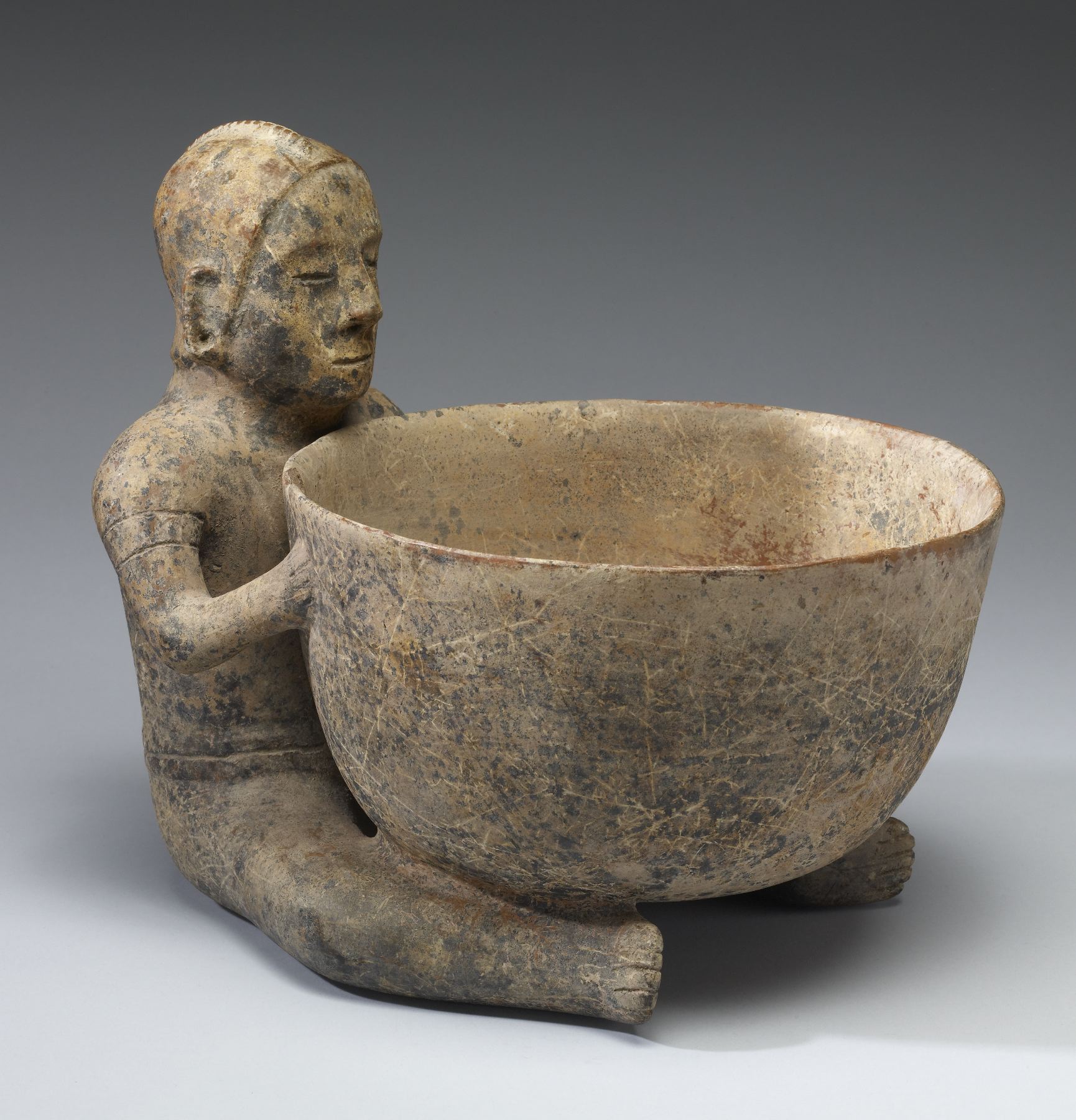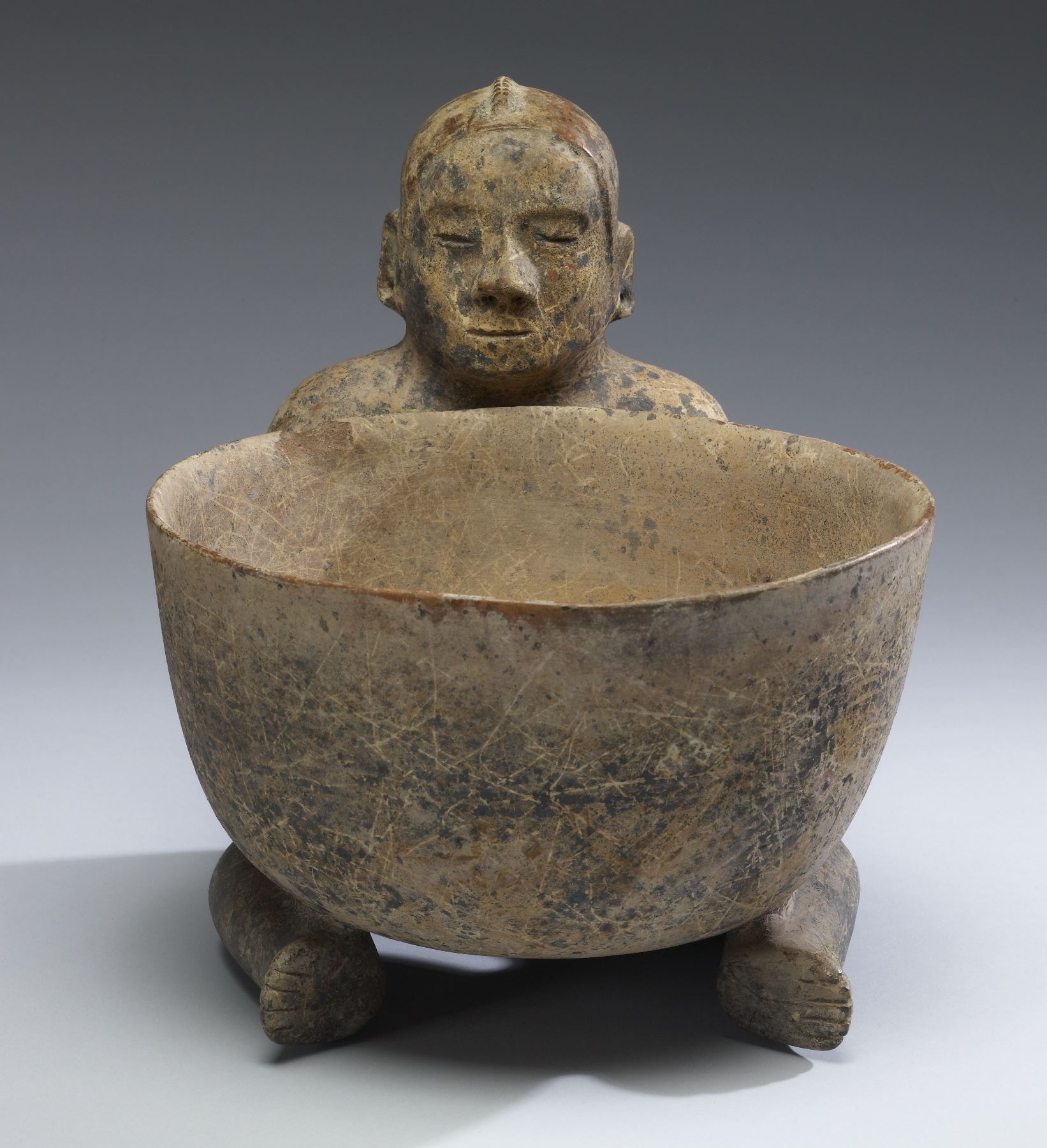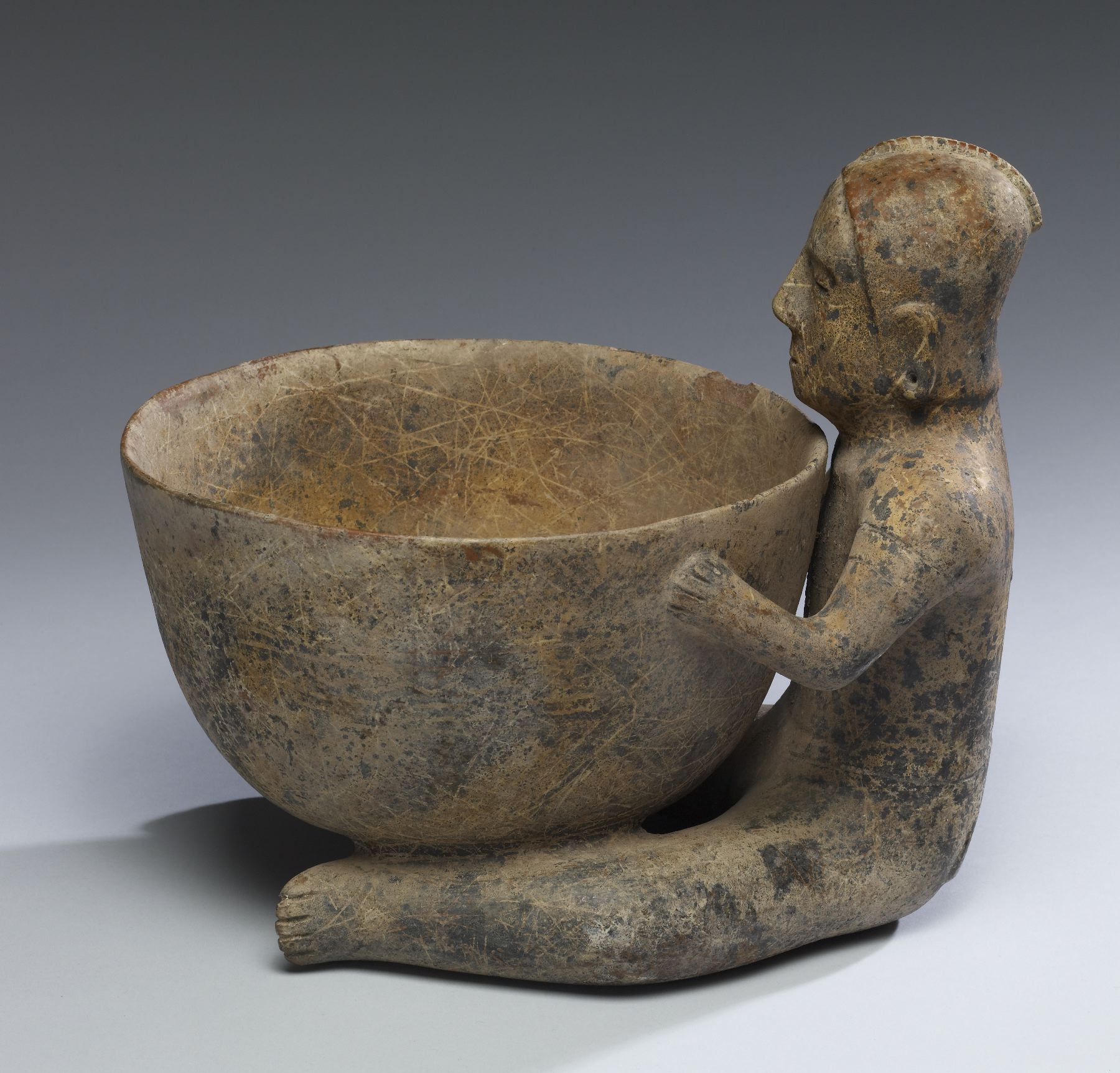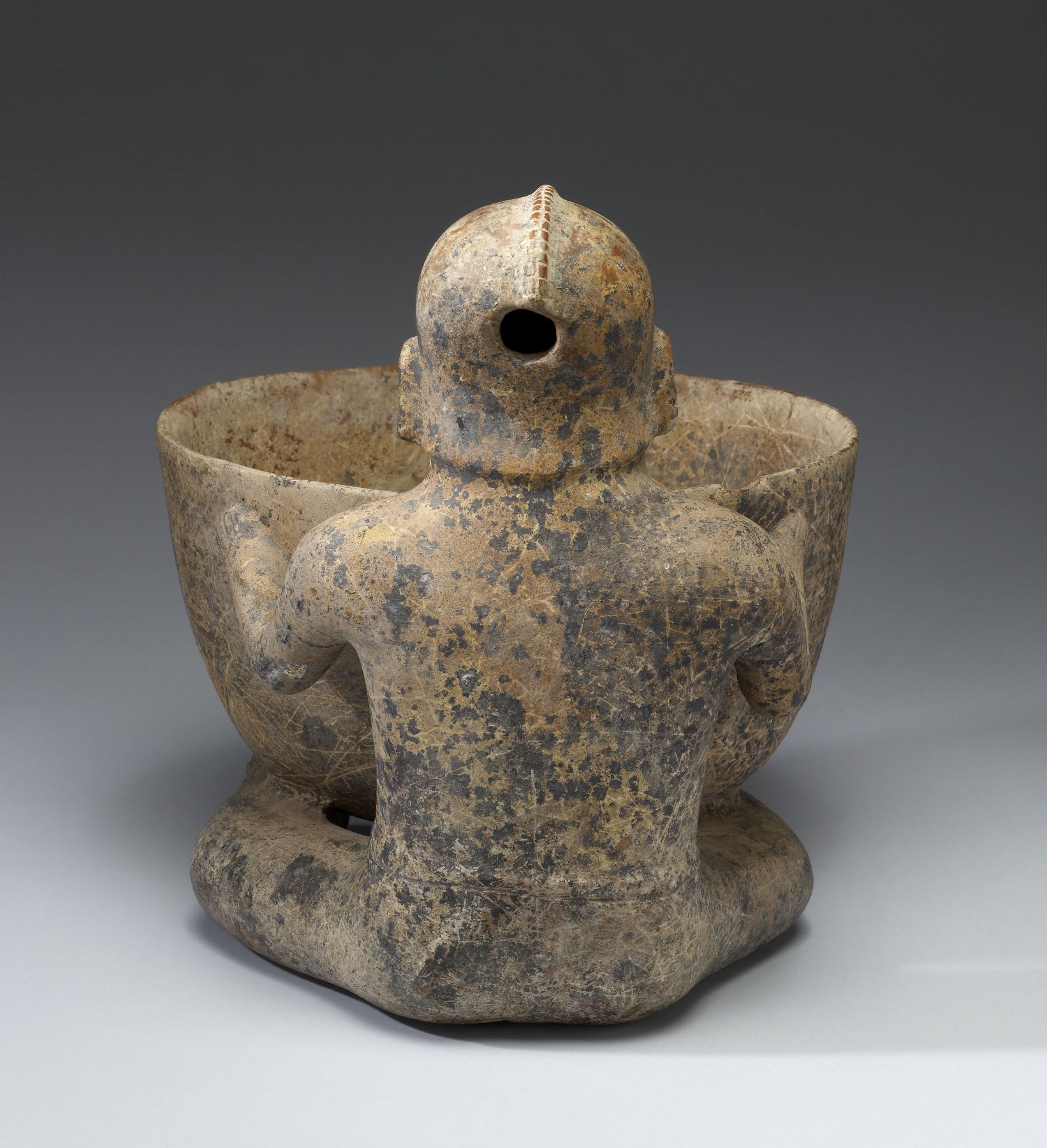Figure with Large Bowl
(Ancient Americas )
The feast was a critical part of sociopolitics throughout ancient Mesoamerica. It was a forum for cementing alliances, forging new relationships, and strengthening obligations of reciprocity; it also served as a mechanism for redistributing goods, which enhanced the host's prestige and stimulated production and use. This seated figure is not only an excellent technical achievement but also a compelling artwork whose narrative underscores the importance of the feast to West Mexican social politics. This figure may be identified as an attendant at a feast, cradling a large vessel. The container would have held such foods as savory tamales, atole (maize cereal), or any number of other foods that during ancient, Colonial, and modern times constituted appropriate formal banquet fare.
Provenance
Provenance (from the French provenir, 'to come from/forth') is the chronology of the ownership, custody, or location of a historical object. Learn more about provenance at the Walters.
Stendahl Galleries, Los Angeles [date and mode of acquisition unknown]; John G. Bourne, 1970s, by purchase; Walters Art Museum, 2009, by gift.
Exhibitions
| 1998-2008 | Art of Ancient America, 1500 B.C.-1400 A.D.. Museum of New Mexico, Santa Fe. |
Geographies
Mexico, Colima (Place of Origin)
Measurements
H: 10 9/16 x W: 9 7/16 x D: 12 3/16 in. (26.9 x 24 x 30.9 cm)
Credit Line
Gift of John Bourne, 2009
Location in Museum
Not on view
Accession Number
In libraries, galleries, museums, and archives, an accession number is a unique identifier assigned to each object in the collection.
In libraries, galleries, museums, and archives, an accession number is a unique identifier assigned to each object in the collection.
2009.20.18








